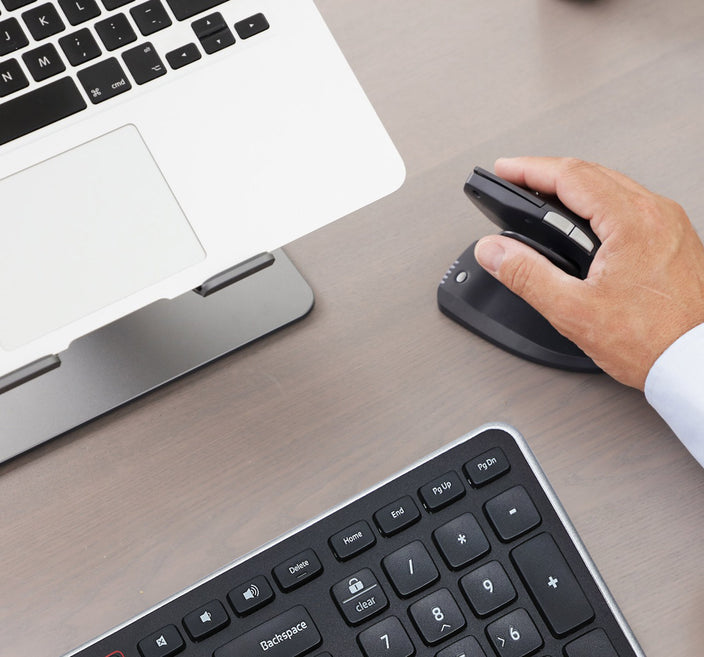Ulnar injury, carpal tunnel syndrome, tendonitis, and mouse arm. These disorders have many names, but they all result in pain and discomfort for office workers. Being in pain makes it awfully challenging to do good work.
If you have ever experienced the kind of pain and discomfort in your hands, arms, shoulders or back that makes it difficult to work, you are indeed looking to do whatever you can to prevent it from happening again. And luckily there is a lot you can do.
See some more exercises on the BeActive playlist on our Youtube channel.
Prevention
Suppose you want to prevent pain and discomfort related to office work. In that case, we recommend that you consider the tools you are using, including the design of your workstation.
You can also read our blog post "What's the connection between working environment, work area and workstation?"
It might be challenging to design your home office in an ergonomically correct way, but there are some excellent guidelines to seek inspiration from.
- Pay attention to how long you stay in the same position
- Change your position during the day
- Take breaks away from the computer
Work tools
Mice and keyboards are among the leading causes of pain and strain injuries for office workers. So even though you may not have experienced discomfort from doing repetitive work, an ergonomic mouse helps prevent strain injuries and tension that can cause problems over time.
RollerMouse is a centred mouse developed in collaboration with ergonomic experts with the ambition to allow you to work in the best possible way. With the RollerMouse placed in a central position in front of the keyboard, you are automatically placed ergonomically correct. This prevents the kind of over-stretching and twisting you experience working with a traditional mouse.
When using a RollerMouse, it allows you to use both hands in a neutral and relaxed position close to your body. You avoid the unnatural grip on the mouse and instead divide the strain evenly between your hands.
Read more about our selection of centred mice here.
Even if you work with a traditional one-handed mouse, there are things you can do to minimize the risk of strain injuries.
It is crucial that your mouse fits your hand perfectly and provides optimal support and comfort. Your grip should be relaxed so that you do not bend your fingers too much, as this can excessively strain your hand and wrist. This is the kind of hand movement that leads to mouse injuries. Especially with a one-handed mouse, where you use the same hand for everything, it is essential that your mouse fits your well and offers some variation.
Read more about our one-handed mouse here.



